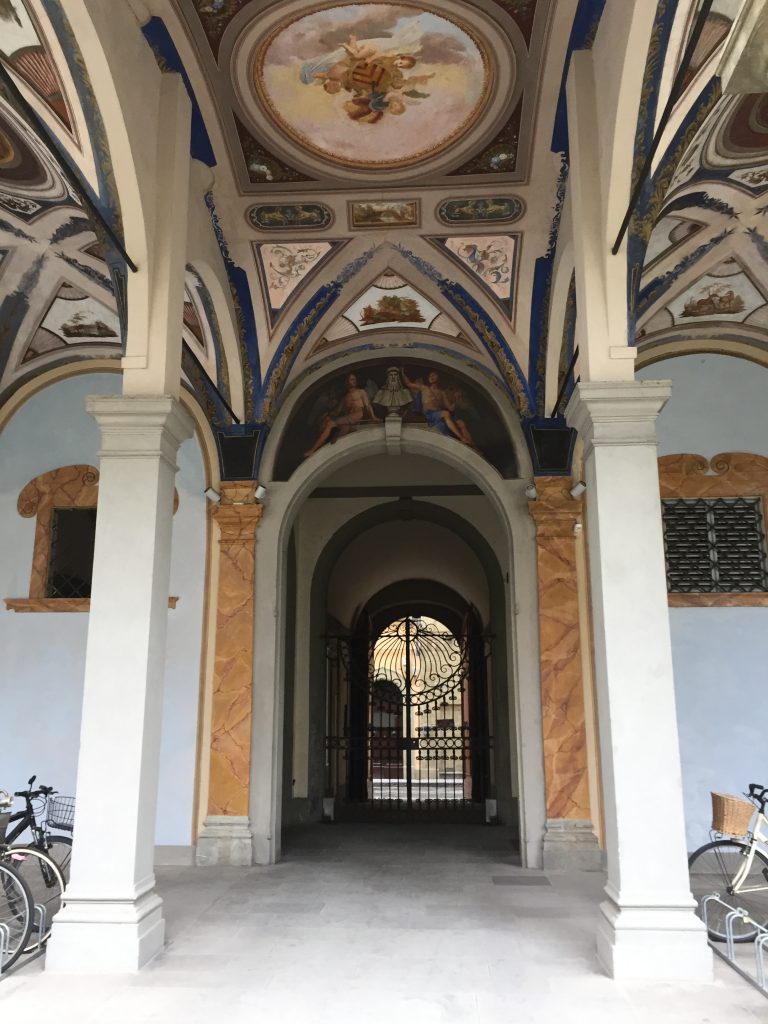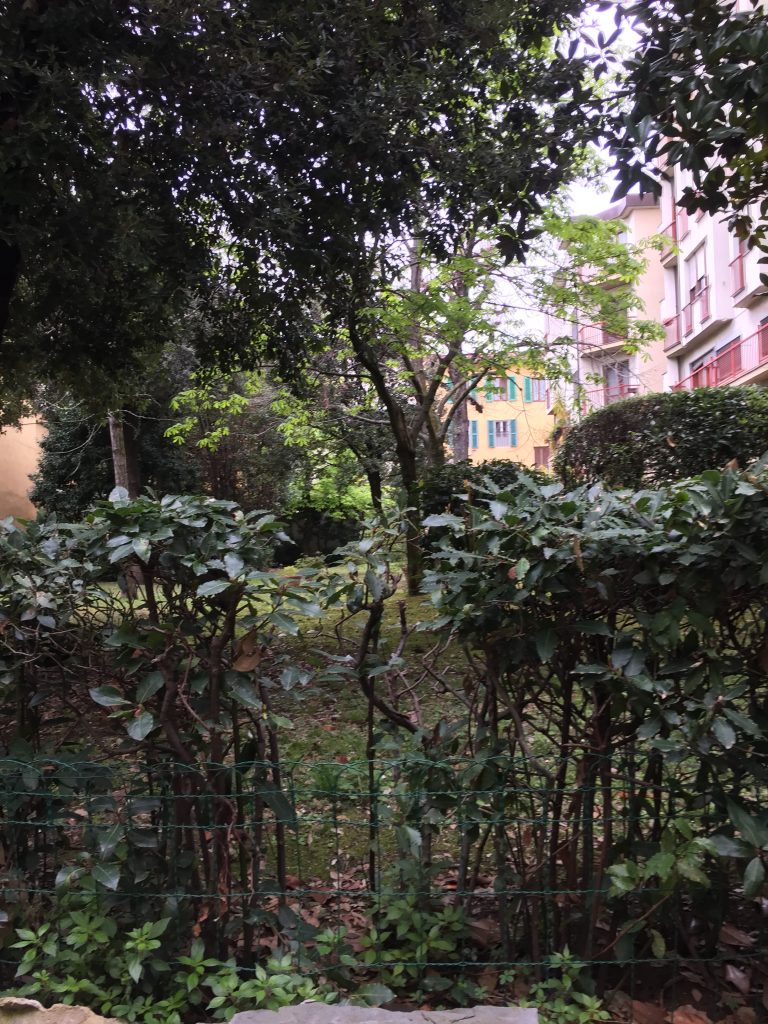If you happen to be walking along borgo Pinti, pause at number 33, where you can catch a glimpse of a private grassy space dotted with tall trees through the large entranceway of the palazzo not far from the corner of via Nuova dei Caccini. Passing through the open doors and the iron carriage gates, you cross a decorated atrium that leads into the garden. What you see is a remnant of what was one of the most beautiful and exotic gardens in Florence at the end of the 16th century.
The Caccini Garden, off borgo Pinti, was one of the most beautiful and exotic gardens in Florence at the end of the 16th century.

It extended as far as the rear of the Pergola theatre and, according to a drawing found in the Biblioteca Riccardiana, the garden was divided into various areas where new bulbs were cultivated and studied, with a fountain in the centre for watering the plants. Apart from its unique botanical patrimony, the garden was also embellished with elegant statuary. In the 1400s, the palazzo was owned by the Ferrantini family before it was inherited by the Caccini family, who enlarged and modernized it. However, it was not until over a century later that a member of that family, Matteo Caccini, made the building famous for more than its architecture.
Born to Giovanni Caccini and Maddalena di Paolo Corsini in Florence on April 15, 1573, Matteo Caccini was the godson of cardinal Ferdinando de’ Medici, who later became grand duke of Tuscany. Introduced into the family’s mercantile business, Caccini soon developed other interests in music and then in horticulture. At the beginning, the latter hobby was limited to the family garden in borgo Pinti, but he soon also started to rent land from the wool workers’ guild behind the Santissima Annunziata church. He became an avid collector of plants to the extent that, in a 1929 article on botanical history, the pioneer of geothermal energy, Piero Ginori Conti, described him as an “illustrious merchant and an expert in rare plants”, who had given names to several species at that time unknown in Italy. Thanks to his ties with the Medici, Caccini was able to procure exotic flowers, bulbs and seeds from places like Turkey and Egypt, as well as onions and potatoes from Virginia through one of the grand ducal agents in Holland. He, in turn, sold or bartered these with his counterparts throughout Italy and abroad. They included the celebrated Flemish horticulturist and director of the imperial medical garden in Vienna, Charles de l’Escluse (or Clusius), with whom he corresponded between 1606 and 1609 and who referred to Caccini as “vir illustrissimus”. Caccini had asked Charles de l’Escluse to introduce him to Capuchin friar and botanist Gregorio da Reggio, who also became his correspondent, except his opinion of Caccini was not as high as that of their mutual friend. This can be seen in a letter written in 1606, in which the monk waspishly described Caccini as an amateur who was “not very expert in the profession”.
In 1818, the German philosopher lived in Palazzo Caccini, which is now divided into apartments, whilst the remains of the garden are surrounded on three sides by condominiums. Instead, a modern extension designed by architect Roland Pagnini was added to Palazzo Caccini at numbers 7 to 21 on via Nuova dei Caccini in the 1970s.

In 1605, Caccini was embroiled in a serious incident. As a reaction to a row with a member of the Accademia, he lashed out with a knife, wounding his adversary in the face. After several days in prison, with the help of his connections at court, he was able to leave for Rome in time to attend the coronation of Alessandro de’ Medici as Pope Leo XI. It was only in 1608 that he could return to Florence and settle the matter with the man he had stabbed. He later returned to Rome, where he moved for several years in influential ecclesiastical and scientific circles.
A man who always championed and protected his family’s reputation and wealth, Caccini was nevertheless unhappy with one of his two brothers, Cosimo (1574-1648), who had taken the name of Tommaso when he became a Dominican friar. This was because Tommaso had become a key player in the inquisition against Galileo Galilei and prepared the paperwork for it. Caccini did much to discourage his brother, but without success.
In 1624, Caccini married Ortensia Acciaiuoli. He died 16 years later, on September 20, 1640 and is buried in the Santa Croce Basilica.
In 1818, the German philosopher Arthur Schopenhauer lived in Palazzo Caccini, which is now divided into apartments, whilst the remains of the garden are surrounded on three sides by condominiums. Instead, a modern extension designed by architect Roland Pagnini was added to Palazzo Caccini at numbers 7 to 21 on via Nuova dei Caccini in the 1970s. This was controversial and Italia Nostra, the national association, whose mission is to protect Italy’s historic, artistic and natural heritage, objected to the project and managed to halt its construction briefly in 1971, although eventually it went ahead.








